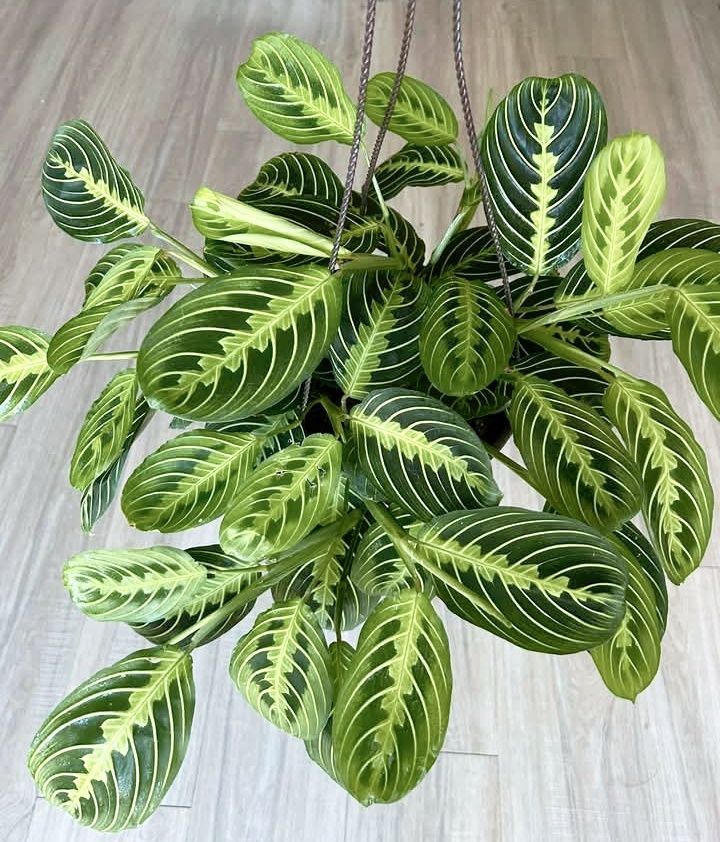
Prayer plants are more than just decorative houseplants — they’re living, moving art. Known for their vibrant leaf patterns and unique nighttime leaf-folding behavior, prayer plants (especially the Maranta leuconeura) are beloved by many indoor gardeners.
But what if one plant isn’t enough? What if you could fill your home — or your friends’ homes — with these leafy beauties without buying more?
Here’s the good news: you can!
This detailed guide titled “Grow Your Prayer Plant Family – Easy Propagation Tips” will walk you through the best propagation techniques to multiply your prayer plant easily at home. Whether you’re a first-time plant parent or a seasoned grower, this guide will help you confidently grow your green family using natural and beginner-friendly methods.
How Can You Propagate a Prayer Plant?
There are two main ways to propagate prayer plants, and both are effective:
- Stem Cuttings in Water
- Root Division
Let’s explore each technique in depth.
Method 1: Stem Cutting in Water
Water propagation is ideal if you enjoy watching roots develop before your eyes. It’s simple, low-risk, and highly rewarding.
Why Use Water Propagation?
- No need for soil upfront
- Easy to monitor root development
- Makes a great science project for kids or beginners
Step-by-Step: Propagation by Stem Cuttings
1. Choose a Healthy Stem
Select a vibrant stem with at least one visible node—a small bump or line where leaves emerge and roots will form. A good cutting should have:
- 1–2 nodes
- 2–3 healthy leaves
- No signs of pests or disease
2. Make a Clean Cut
Use sterilized scissors or garden shears to cut just below a node. A clean cut minimizes stress and infection risk. If possible, cut at an angle to increase the surface area for rooting.
3. Place in a Jar of Water
Fill a glass jar or cup with clean, room-temperature water. Submerge the node while ensuring the leaves stay dry above the waterline. Too much submersion leads to rot.
4. Find the Perfect Spot
Set the jar in a bright area away from direct sunlight. A windowsill with filtered light is ideal. Too much sun can cause the water to heat up or lead to algae growth.
5. Change Water Regularly
Every 2–3 days, replace the water to:
- Prevent bacterial buildup
- Keep oxygen levels high
- Encourage stronger, faster roots
6. Wait for Roots to Develop
Within 1 to 3 weeks, you should start seeing little white roots sprouting from the node. Wait until they grow at least 1–2 inches long before transferring to soil.
7. Plant in Soil
Gently place the rooted cutting in moist, well-draining potting mix. Water it lightly and keep the soil damp (not soggy) as it acclimates.
Method 2: Propagation by Root Division
If your prayer plant is already full and lush, dividing it is a quick way to create several plants from one.
Why Choose Division?
- Instant gratification — no waiting for roots
- Less risk of failure
- Great option when repotting a root-bound plant
Step-by-Step: Propagation by Division
1. Remove the Plant from Its Pot
Tilt the pot sideways and gently slide the plant out. Squeeze the pot slightly if needed to loosen it. Tap away excess soil from the roots.
2. Locate Natural Separations
Prayer plants often grow in clumps or clusters. Look for natural points where the plant can be gently pulled apart, each section containing roots and stems.
3. Gently Separate the Clumps
Use your fingers to tease apart the root system. If it’s too tangled, you may use a sterilized knife. Avoid damaging too many roots during separation.
4. Repot Each Section
Place each divided section into its own pot filled with fresh potting mix. Water thoroughly after planting and keep in a humid, shaded spot for the first few days.
What Tools and Materials Will You Need?
To successfully propagate your prayer plant, gather the following:
- Clean, sharp scissors or pruning shears
- A glass jar or container for water
- Fresh, well-draining potting soil
- Small nursery pots
- Spray bottle for misting
- Rooting hormone (optional but helpful)
- Gloves and a clean surface for division
Having everything ready beforehand makes the process smoother and less stressful for both you and your plant.
Should You Use Rooting Hormone?
While prayer plants root well on their own, a rooting hormone can:
- Speed up the rooting process
- Increase the success rate
- Protect against rot and disease
To use:
Dip the cut end of your stem cutting into the rooting hormone powder or gel before placing it in water or soil.
Post-Propagation Care: How to Keep Baby Plants Happy
Once your cuttings or divisions are planted, your care routine determines how well they thrive.
Light
- Provide bright, indirect light
- Avoid harsh sun, which can scorch new leaves
Water
- Keep soil consistently moist, but not waterlogged
- Allow the top inch of soil to dry out between waterings
Humidity
- Prayer plants love moisture in the air
- Mist frequently or place a humidifier nearby
Feeding
- Wait about 4–6 weeks before using fertilizer
- Use a gentle, diluted liquid fertilizer once a month during growing season
Common Mistakes to Avoid
Even experienced plant lovers can make mistakes. Avoid these common pitfalls:
- Cutting above the node — roots won’t form
- Leaving leaves submerged in water — leads to rot
- Using compact or poor soil — can suffocate roots
- Overwatering — causes fungal issues
- Skipping clean tools — spreads disease
Taking your time and being gentle pays off in healthier, happier plants.
Bonus Tip: Encourage a Fuller, Bushier Plant
Did you know pruning promotes bushier growth?
Snip the top few inches of a healthy stem (right above a leaf node), and your prayer plant will respond by branching out — giving you a fuller, more lush appearance. Plus, you get more cuttings to propagate!
